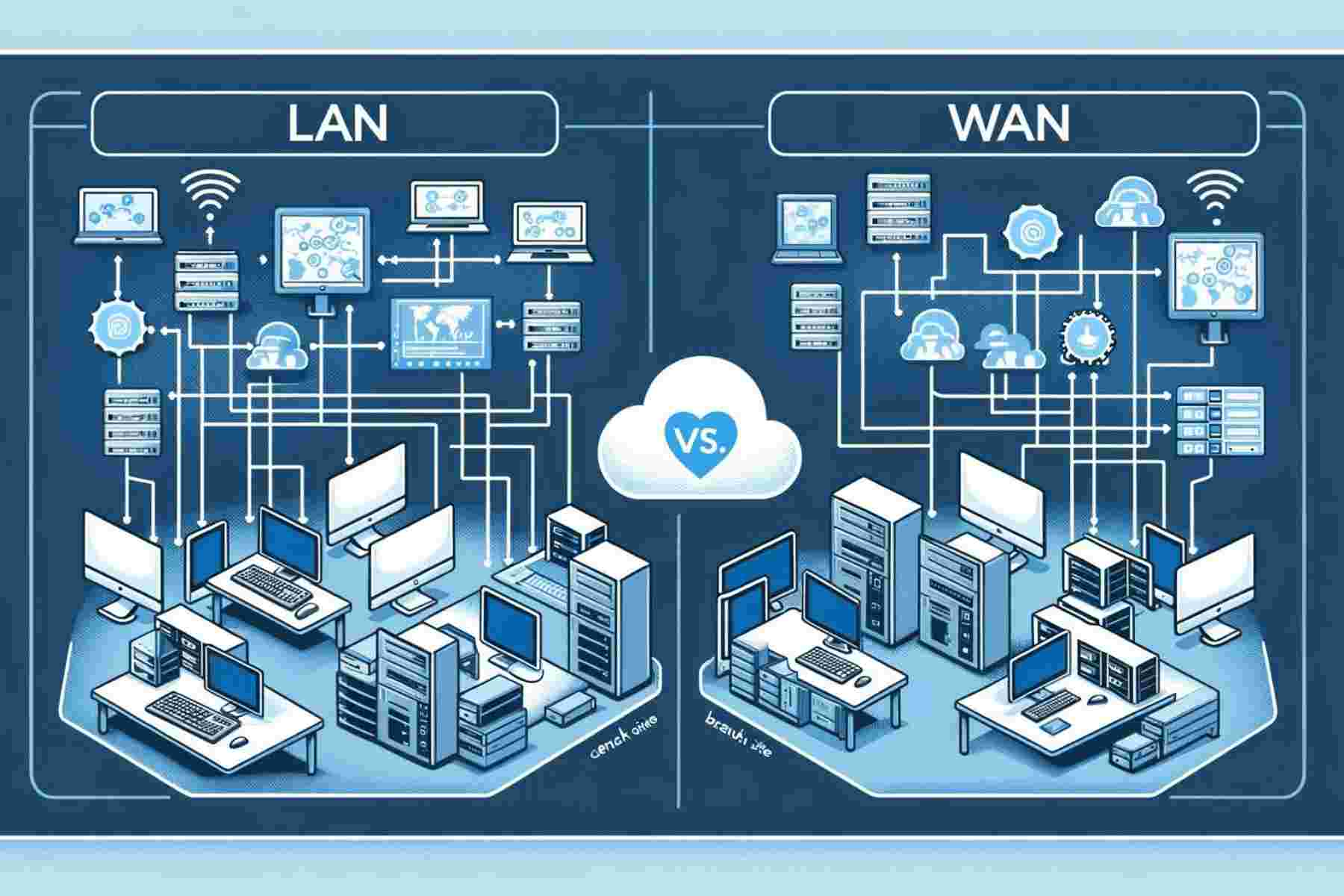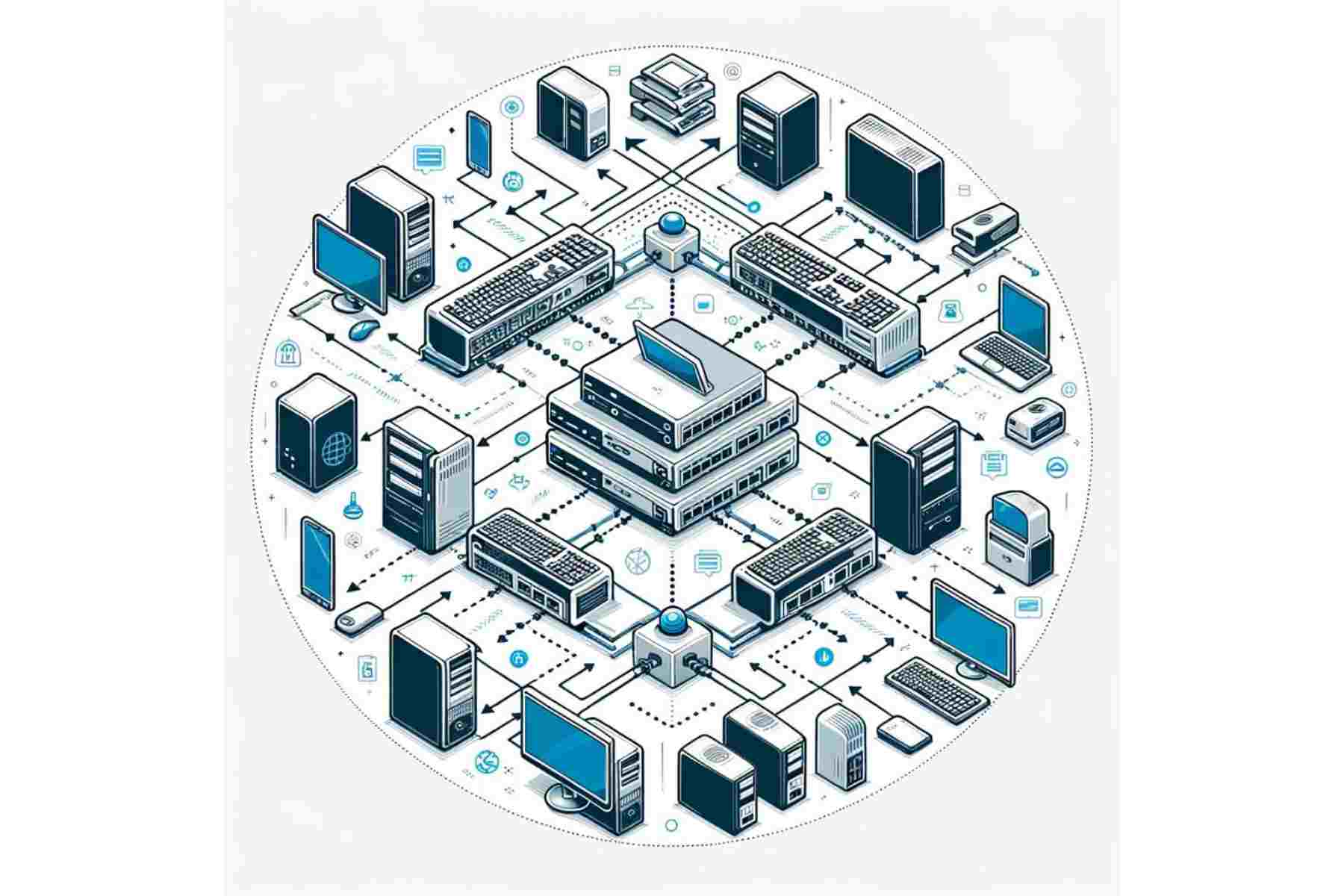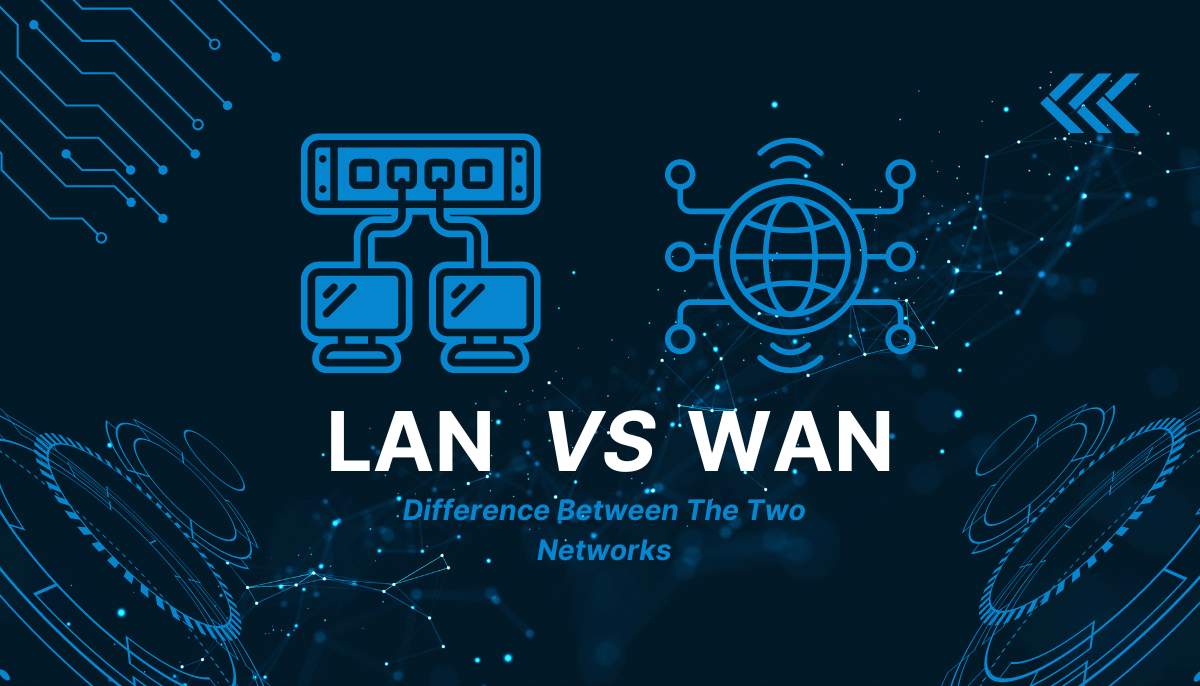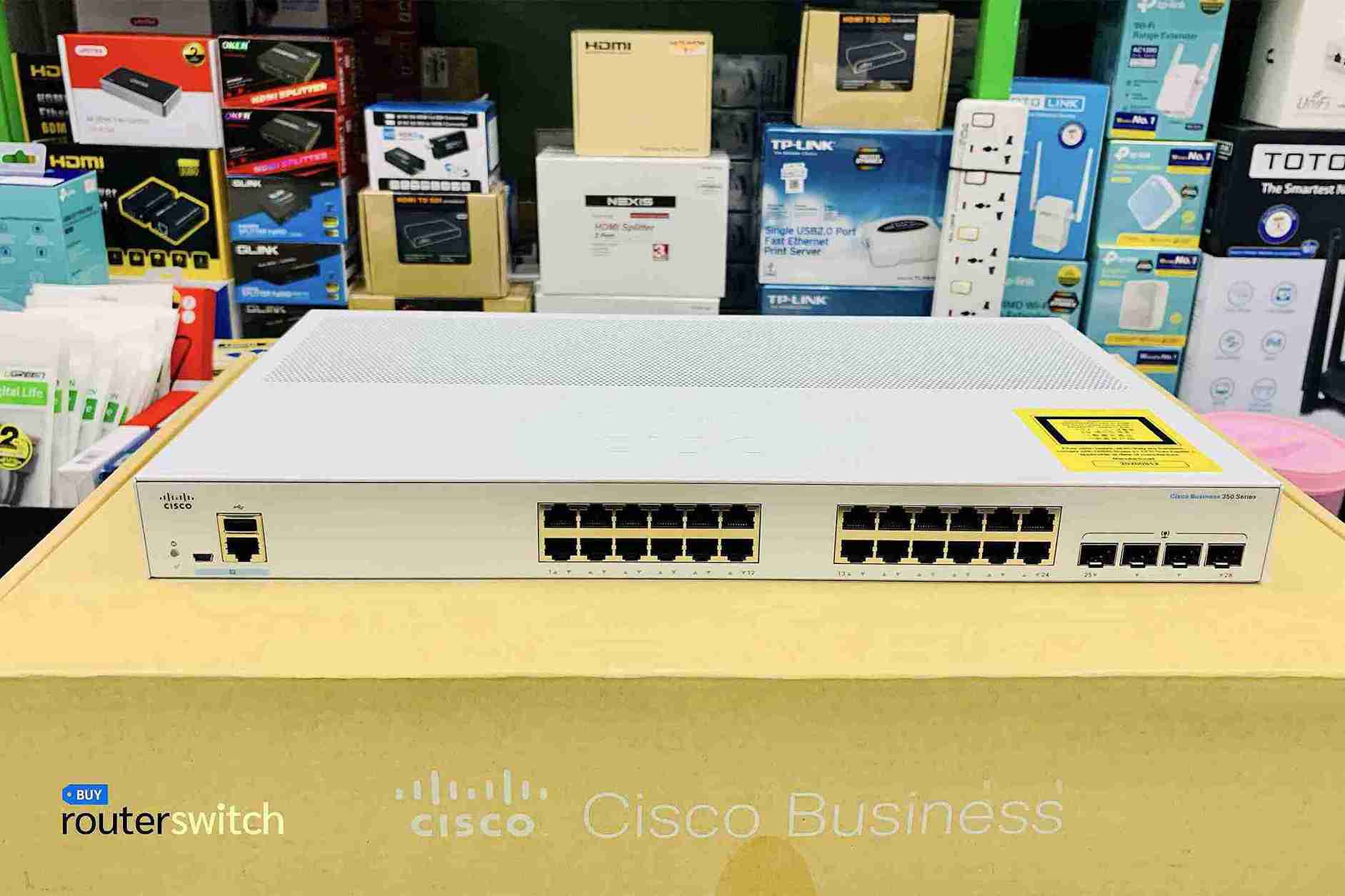LAN vs WAN: Differences Between the Two Networks
Table of content
Introduction:
When establishing a new network, you must have immense knowledge of WAN vs LAN. A newly established business or network infrastructure requires a particular network. Do you know which one suits you well? We have the answer! The present blog will explore all the dimensions of WAN, LAN, WAN vs LAN port, LAN vs WAN, and more. Thus, put on your reading glasses and explore this blog to learn about Wide Area Network and Local Area Network.
Understanding LAN vs WAN:

A collection of linked computers and other devices inside a constrained physical space is known as a local area network, or LAN. It is intended to facilitate effective communication and data sharing amongst devices that are situated in close proximity to one another. WiFi and Ethernet cables are common technologies that local area networks (LANs) use to connect devices.
Compared to local area networks (LANs), wide area networks (WANs) cover wider areas. They facilitate global device-to-device connectivity and information sharing. Typically, a single organization that owns a WAN bears a lot of expenditures. Generally speaking, every workplace has its own LAN, which a WAN connects. IP tunnels, VPNs, or leased lines are an option to establish such lengthy connections.
What is a Local Area Network?
At its simplest, a Local Area Network is responsible for connecting devices that are physically close to one another, such as computers, printers, servers, and more. Besides, you can better understand the concept of LAN by considering a network that works only to connect different devices within a single office or shop. Let us mention some of the key specifications of a LAN here:
- Typically spans a single building or campus.
- High data transfer rates and lower latency.
- Managed internally by your own IT team or a designated administrator.
- Connects Through wired (Ethernet) or wireless (WiFi) means.
What is a Wide Area Network?
Now, you want to expand your network. The most important thing you have to consider is covering a large geographical area. This is where a WAN comes in and connects devices across distinct buildings, cities, or even countries. The best example of a Wide Area Network is the internet. Further specifications are in the following points:
- Extends over large distances, connecting multiple LANs.
- Generally, speeds are slower compared to LAN due to large geographical distances.
- Suitable for businesses running over distinct locations.
- Multiple administrators and service providers have control over a WAN.
LAN vs WAN: How Do They Work?

Understanding the working principles of LAN vs WAN is important. Without that, you cannot determine the speed of your network, as both networks vary when it comes to data exchange rate and speed. Therefore, it becomes necessary than anything to learn about how a WAN and LAN work. To make the topic simple and comprehensive, here is a short and in-depth overview of the working of ‘WAN vs LAN.’
Working Of a Wide Area Network:

WAN (Wide Area Network) connects devices over large geographical distances, encompassing cities, countries, or even continents. Using a WAN port, this network allows data transmission across vast areas by relying on routers and public communication links. The WAN port connects the local network to the internet or other networks, ensuring data flows between extensive networks efficiently.
Working Of a Local Area Network:

On the other hand, LAN (Local Area Network) operates within a more confined area, typically a single building or campus. It utilizes LAN ports to connect devices like computers, printers, and servers within this limited space. Furthermore, the LAN port facilitates rapid data exchange over short distances, offering higher speeds and more security due to its restricted access.
Difference Between LAN and WAN Ports:
A WAN port is implemented by using an RJ-45 Ethernet port to establish a connection with an external network like the Internet. Usually, it is located on a router and wired to a DSL model or a cable; therefore, it receives the information coming from the external network.
Despite having different usages, a LAN port is quite similar to a WAN port. It is located apart from the WAN port on any router. It is worth noting that understanding the WAN port vs LAN port is equally important to establish a seamless network connection.
Where and When To Use LAN vs WAN:
In order to make the best out of them, it is important to know the suitable uses cases of Wide Area Network and Local Area Network. Here is how they meet special requirements of users in different scenarios:
When to Use LAN?
As was previously discussed, LANs are intended to link devices that are close to one another to create a high-speed, private, and isolated connection. For example, they are perfect for staff communication and file sharing inside one or more offices in the same building. Furthermore, LANs are essential in industrial environments because they link automated robots to a factory’s central control system.
In addition, LANs also improve transaction efficiency and security in retail contexts by establishing networks for mobile point-of-sale systems and video surveillance equipment.
When To Use WAN?
When you need to exchange resources over a wide geographic area, wide area networks come into play. They make it easier for employees at geographically separated branch offices to communicate with one another and access common resources, regardless of where they are in the world. Additionally, WANs give users, outside parties, and partners remote access so they can access internal company resources from almost anywhere.
Furthermore, WANs are essential for connecting to cloud-based services and apps, which are becoming more and more necessary for contemporary company operations.
Summarizing LAN vs WAN:
| LAN | WAN |
|
LAN means local area network. |
WAN means wide area network. |
|
LANs connect users and applications in close geographical proximity (same building). |
WANs connect users and applications in geographically dispersed locations (across the globe). |
|
LANs use OSI Layer 1 and Layer 2 data connection equipment for transmission. |
WANs use Layer 1, 2, and 3 network devices for data transmission. |
|
LANs use local connections like ethernet cables and wireless access points. |
WANs use wide area connections like MPLS, VPNs, leased lines, and the cloud. |
|
LANs are faster, because they span less distance and have less congestion. |
WANs are slightly slower, but that may not be perceived by your users. |
|
LANs are good for private IoT networks, bot networks, and small business networks. |
WANs are good for disaster recovery, applications with global users, and large corporate networks. |
Conclusion:
The concept of LAN vs WAN should not be forgotten when you are designing a network. From connecting devices in close proximity to covering a dispersed geographical area, WAN and LAN are the only ways to make a networking environment successful. Therefore, it is necessary to understand the working of Wide Area Networks and Local Area Networks along with their differences, specifications, and use cases. After providing you with this blog, we hope to have covered almost everything you should know about WAN and LAN. Thus, forget not to hit up when you need more insights.
Frequently Asked Questions:
Why should I choose WAN over LAN?
You should choose WAN over LAN when your network spans a large geographical area. A Wide Area Network enables communication over long distances and dispersed locations.
Which one is the best choice WAN vs LAN?
When it comes to choosing one form WAN vs LAN, considering your business requirements matter a lot. If you have a small set up spanning close proximity then LAN is your choice. Whereas, you have to consider a WAN when you have to send information or enable communication across cities or even countries?
Which one is slower in speed from WAN vs LAN?
A WAN is typically slower in speed as it covers a large geographical area spanning across buildings, cities, and even countries. On the other, LAN is faster because of its limited geographical range.
What is a WAN port?
The socket on network devices to connect an external network, mostly the internet, is known as WAN port. A WAN port is an RJ-45 Ethernet port on a router connects to a cable, DSL or FiOS modem in the home and small office.
What are the two main types of networks?
There are two main types of networks. One is Wide Area Network or WAN and second is Local Area Network or LAN. Both WAN and LAN functions in different ways with their own specifications and capabilities.




 Catalog
Catalog





















































































































 (800) 870-9487
(800) 870-9487